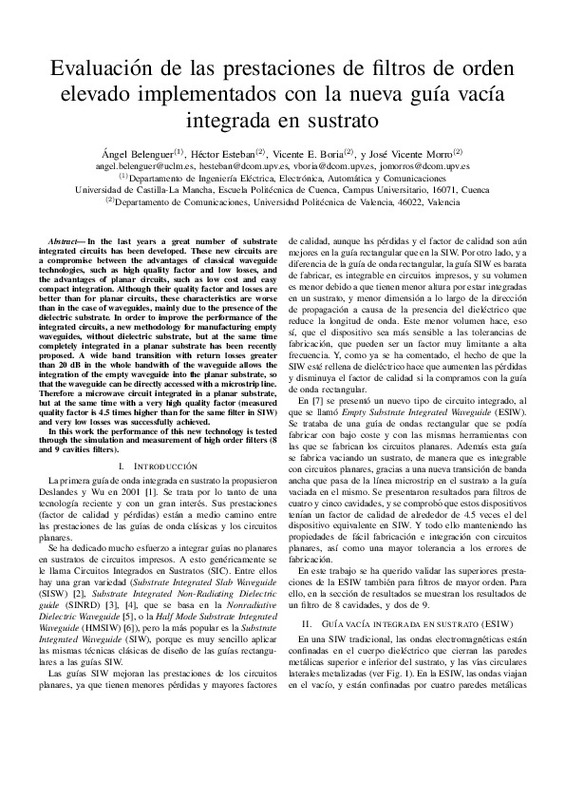|
Resumen:
|
In the last years a great number of substrate
integrated circuits has been developed. These new circuits are
a compromise between the advantages of classical waveguide
technologies, such as high quality factor and low ...[+]
In the last years a great number of substrate
integrated circuits has been developed. These new circuits are
a compromise between the advantages of classical waveguide
technologies, such as high quality factor and low losses, and
the advantages of planar circuits, such as low cost and easy
compact integration. Although their quality factor and losses are
better than for planar circuits, these characteristics are worse
than in the case of waveguides, mainly due to the presence of the
dielectric substrate. In order to improve the performance of the
integrated circuits, a new methodology for manufacturing empty
waveguides, without dielectric substrate, but at the same time
completely integrated in a planar substrate has been recently
proposed. A wide band transition with return losses greater
than 20 dB in the whole bandwith of the waveguide allows the
integration of the empty waveguide into the planar substrate, so
that the waveguide can be directly accessed with a microstrip line.
Therefore a microwave circuit integrated in a planar substrate,
but at the same time with a very high quality factor (measured
quality factor is 4.5 times higher than for the same filter in SIW)
and very low losses was successfully achieved.
In this work the performance of this new technology is tested
through the simulation and measurement of high order filters (8
and 9 cavities filters).
[-]
|







